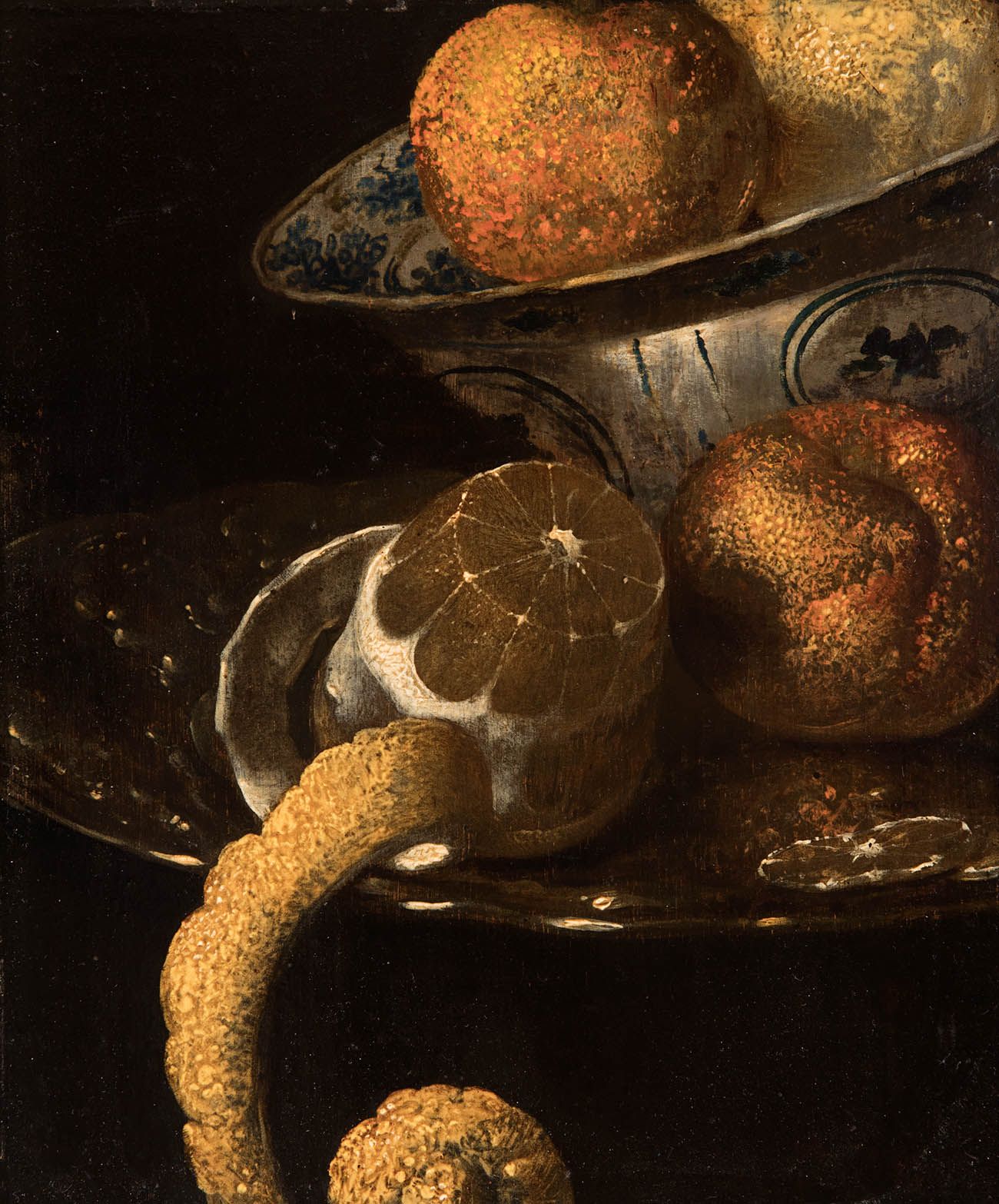Description
Dutch school of the 17th century. Circle of WILLEM KALF (Rotterdam, 1619-Amsterdam, 1693).
17th-century Dutch school. Circle of WILLEM KALF (Rotterdam, 1619-Amsterdam, 1693). "Still Life with Fruit. Oil on panel. Size: 27.5 x 22 cm; 44 x 43 cm (frame). Due to its technical and formal characteristics, the present work can be related to the circle of Willem Kalf, one of the most important Dutch still life painters of all times. It is a small work, faithful to his style, captured in the foreground, in which few but select objects stand out on a table against a dark background. As in many of Kalf's works, there is almost always a bone china bowl, often tilted so that the fruit falls out of it. Willem Kalf was born in Rotterdam in 1619. He was previously thought to have been born in 1622, but research conducted by the archive of H. van Gelder established the painter's correct place and date of birth. In the late 1630s Willem Kalf travelled to Paris and spent time in the circle of Flemish artists in Saint-Germain-des-Prés, Paris. In Paris, he painted mainly small-scale rustic interiors and still lifes. Kalf's rustic interiors are usually dominated by groups of vegetables, buckets, pots and pans, which are arranged in the foreground (e.g. Kitchen Still Life, Dresden, Gemäldegal, Alte Meister). The figures usually appeared in the blurred darkness of the background. Although painted in Paris, paintings of traditional works in Flanders in the early 17th century, by artists such as David Teniers the Younger. The only indication of the Flemish origin of the paintings is that Flemish exponents of the same genre would not have been depicted in their works. The rustic interiors of the calves had a great influence on French art in the circle of the Le Nain brothers. The semi-monochrome still lifes that Calf created in Paris from a link to the banquet or "small banquet pieces" by Pieter Claesz, Willem Claeszoon Heda and others in the 1630s. During the 1640s, Calf further developed the bench into a novel form of sumptuous and ornate still lifes (known as show still life), depicting rich groups of gold and silver vessels. Like other lives of this period, these paintings often expressed vanitas allegories. Kalf's still-life paintings vary little in their structure, and most of them actually present the same objects. There is crockery, with gold and silver vessels, many of which have been identified as goldsmiths, such as Johannes Lutma, and many of which have been identified as goldsmiths.
46
Dutch school of the 17th century. Circle of WILLEM KALF (Rotterdam, 1619-Amsterdam, 1693).
